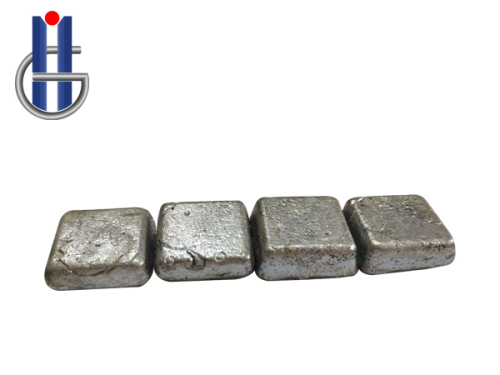Tin Ingot Processing typically involves several steps to refine and shape the raw tin material into a usable form for various applications. Tin is a soft, malleable, and ductile metal with a low melting point, making it relatively easy to work with. Here is a general outline of the
tin ingot processing steps:
Mining and Extraction:
Tin is often extracted from its ore, cassiterite (tin dioxide). The ore is mined, and the tin is then extracted through a series of processes, including crushing, grinding, and gravity separation.
Smelting:
The extracted tin concentrate is subjected to smelting to obtain crude tin metal. This involves heating the concentrate with carbon or another reducing agent to remove impurities and obtain molten tin.
Refining:
The crude tin obtained from smelting may contain impurities such as lead, zinc, and copper. Refining processes, such as liquation or electrolytic refining, are employed to purify the tin further.
Casting into Ingots:
The refined tin is then cast into ingots for easier handling and transportation. This step involves pouring the molten tin into molds to create solid metal ingots.
Cooling and Solidification:
The cast tin ingots are allowed to cool and solidify. This can be a controlled process to ensure the ingots form with the desired size and structure.
Quality Control:
Quality control measures may include checking the composition of the tin ingots to ensure they meet industry standards. This may involve analyzing the tin for impurities and verifying its purity.
Storage and Transportation:
Tin ingots are typically stored in a controlled environment to prevent contamination and corrosion. They are then transported to various industries where tin is used.
Fabrication and Manufacturing:
Tin ingots can be further processed into various products based on industrial needs. This may involve melting the tin and casting it into specific shapes or rolling it into sheets.
Application-Specific Processing:
Depending on the intended application, tin may undergo additional processing steps. For example, tin can be alloyed with other metals, such as copper, to create tin alloys with specific properties.
It's worth noting that specific processing steps can vary depending on the source of the tin ore, the desired purity level, and the intended applications of the tin. Additionally, environmental and safety considerations are crucial throughout the processing stages. Local regulations and industry standards should be followed to ensure responsible and sustainable tin ingot processing practices.



 High Purity Tin Ingot: Crucial Applications and Benefits
High Purity Tin Ingot: Crucial Applications and Benefits
 Pure Tin Ingot: Essential Material for Diverse Industrial Applications
Pure Tin Ingot: Essential Material for Diverse Industrial Applications
 Unlocking the Potential of Pure Tin Bars: Essential Components for Diverse Industries
Unlocking the Potential of Pure Tin Bars: Essential Components for Diverse Industries
 Lead Bar for Sale: Uses, Specifications, and Buying Considerations
Lead Bar for Sale: Uses, Specifications, and Buying Considerations